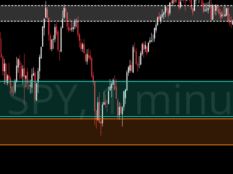Moving Averages 101
I’m Meta Matt, Director of Education and welcome to PB University LITE! This is a 50 Class Trading 101 Series geared towards both new and veteran traders alike! We go over everything from Trading Psychology, Technical Analysis, and Options Trading to Commodity Trading, Forex, and more!! This 50 Class series is not designed be taken in order, it is instead designed for traders to browse and pick which classes interest them. I will include the list of classes at the bottom of this page.
Start Trading With Webull: Free Stock Shares
Custom Trading Indicator DISCOUNT: Try StocksBuddy Today
Get A Trading Coach, Premium Alerts, Education, and Community:
1 Month Membership
90 Days (Save 10% Per Month)
1 Year (Save $279)
The 50-period Moving Average paints a vivid picture of the average price of a stock over the last 50 periods, be it days on the daily chart or minutes on the 1-minute chart.
Similarly, the 200-period Moving Average extends its gaze over a more extended period, providing a comprehensive overview of the stock's average performance over 200 periods.
Now, when these averages engage in a dance, it can tell us a lot about the potential direction of the market.
The 'Golden Cross' scenario unfolds when the short-term average crosses above the long-term average. For example if the 50 Period Moving Average crosses over the 200 Period Moving Average. This can be a potential sign of an uptrend or bullish energy. Think about it, if the average price was higher over the last 50 days than the last 200 days, that means that the price has been getting higher more recently, which is a bullish sign.
On the flip side, the ominous-sounding 'Death Cross' occurs when the short-term average takes a dip below the longer term average, hinting at a possible downtrend. For example a 50 period moving average goes below the 200 period moving average.
You can also use Moving Averages as support and resistance level, and use breaks of strong levels as possible entries or exits.
So for example if the price of a stock was holding above the 200 day moving average, and it was being used as a strong support, then a break below that 200 day moving average could be a strong bearish signal.
It’s important to use other indicators or strategies alongside Moving Averages.

PB University LITE Class List
1) Trading Terminology
2) Stock Market Indices
3) Common, Preferred, and Penny Stocks
4) Diversification of Assets
5) Fundamental Analysis Made Easy
6) Technical Analysis Made Easy
7) Risk Management In The Market
8) Portfolio Management
9) How To Follow Market News
10) Trading Psychology
11) Options Explained
12) The Greeks In Options Trading
13) How To Short Sell Options
14) Covered CALLS
15) Spread Trading
16) Online Brokers for Options Trading
17) Implied Volatility Calculators & Tools
18) Protective PUTS
19) Iron Condors
20) Straddles
21) Reading Level 2
22) Taxes
23) Trading Psychology Techniques
24) The Art Of Trading
25) Becoming A Jedi In The Stock Market
26) Futures Trading Explained
27) Commodity Trading 101
28) Regulatory Environments
29) How To Become A Millionaire
30) $100K In 100 Days
31) Wash Sale Rule
32) Behavioral Finance Part 1
33) Behavioral Finance Part 2
34) 5 Charting Indicators
35) Fair Value Gap
36) Insider Trading and Market Manipulation
37) Stock Chart Types
38) Moving Averages 101
39) Base vs Precious Metals
40) Electricity Trading 101
41) Trading Brokers 101
42) 5 Trading Strategies
43) 85% Trading Rule
44) Are Win Rates A Scam?
45) Futures Trading 101
46) ATR Indicator Strategy With The Greeks
47) MACD Indicator 101
48) Bollinger Bands Indicator 101
49) Wedges, Triangles, Flags and Pennants
50) RSI Divergence 101



